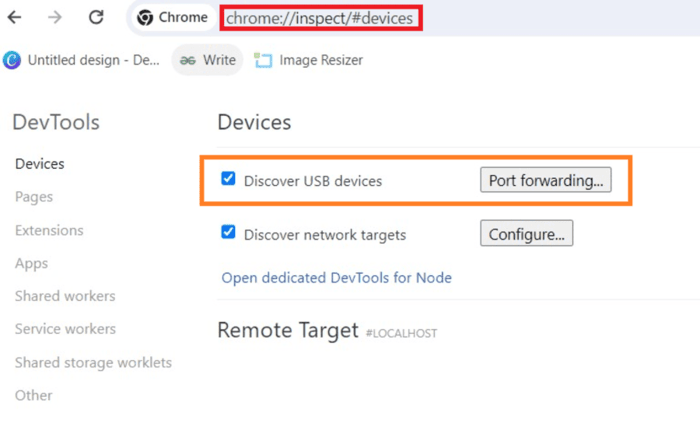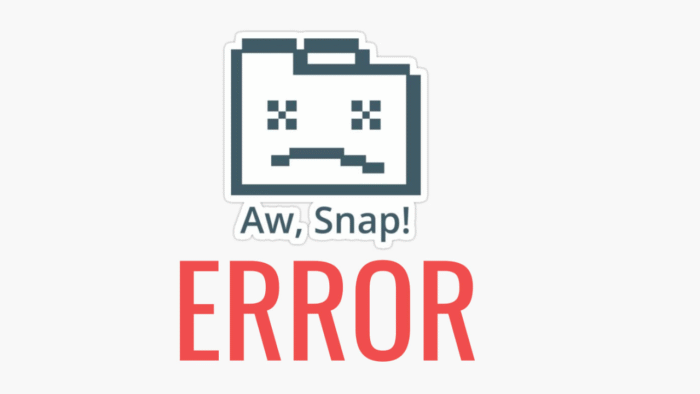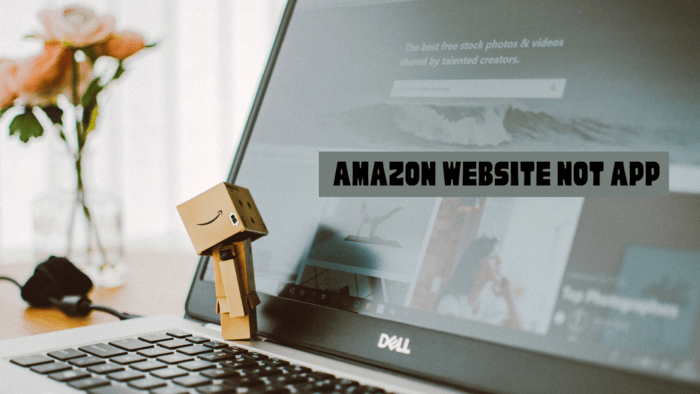Grasping how websites function holds great value for creators, developers, and everyday users.
The Element Inspector tool plays a key role in exploring the framework of a webpage.
Although primarily associated with desktop browsers, you can also access this feature on Android devices.
Whether you’re looking to tweak the appearance of a page, troubleshoot issues, or improve your coding skills, using the element inspection tool on Android can support these tasks.
This guide will lead you through utilizing this tool on Android and discuss its practical applications and benefits.
What Is Inspect Element?
Inspect Element enables users to examine and adjust the underlying code of a webpage, such as markup, styling, and scripting elements.
Web developers, testers, and designers utilize it to explore and troubleshoot the behavior and layout of a site.
Inspecting an element allows you to examine different parts of a webpage, including:
- HTML: Establishes the basic structure of the webpage.
- CSS: Manages the visual presentation and layout.
- JavaScript: Enables interactive features and dynamic behavior.
Inspecting components on Android boosts mobile site efficiency, addresses issues, and assesses the overall design.
Why Use Inspect Element?
Users frequently utilize the Inspect Element feature for various tasks, especially on Android devices.
- Fixing and Testing Issues – Developers use it to find and fix problems with web pages, like layout errors, broken designs, or JavaScript bugs. On mobile, it helps test how a website looks and works on different devices.
- Checking Mobile Design – Optimizing for mobile boosts user engagement. By examining components on an Android device, you can observe how a page adjusts to different screen dimensions and tweak the CSS instantly.
- Learning Web Development – New users learn how websites work. Editing HTML and CSS shows how each part changes a page.
- Modifying Web Pages – You can temporarily change a webpage’s appearance, such as adjusting font sizes, colors, or layouts, without making permanent changes.
- Improving SEO – Examining a website’s elements can highlight SEO concerns, such as absent metadata, oversized images, or poorly structured URLs. Resolving these issues can improve mobile device site performance and increase search results visibility.
Advantages of Inspecting Elements on Android
- Real-Time Testing and Troubleshooting – View changes instantly and resolve layout issues or bugs directly on your device.
- Better User Experience – Recognizing issues specific to mobile devices, such as slow loading times, ineffective layouts, or malfunctioning elements, plays a crucial role in enhancing user experience.
- Mobile Compatibility – While many websites design for desktops, most users browse on their phones. Ensuring that users check and optimize elements adequately ensures a website functions effectively on mobile devices.
- Browser-Specific Testing – Webpages may look different in various browsers. Inspecting elements on Android helps check how a site appears in Chrome, Firefox, or Edge.
- Beginner’s Learning Resource – Studying website structure and styling on Android provides hands-on experience with responsive design and web development.
How to Inspect Elements on Android?
Inspecting elements could be essential if you need to evaluate a site’s adaptability, resolve issues, or explore web design. Here’s a guide to help you:
Method 1: Using Chrome DevTools on a Desktop
Connect your Android phone to a PC and open Chrome DevTools to analyze components. Start the inspection by launching the developer tools in Chrome on your computer.
Steps to Set Up
- Turn on Developer Settings in Android
- Open the Settings menu and select “About Phone.”
- Press the Build Number seven times until a notification says, “You are now a developer.”
- Next, go to Settings → System → Developer Options.
- Turn on the USB Debugging option.
- Install Chrome DevTools on a Desktop
- Link your Android device to the computer via a USB cable.
- Launch Chrome on your computer and type chrome://inspect in the URL field.
- Navigate to the website you’d like to inspect on your phone.
- Chrome DevTools will display your phone and its open tabs.
- Select Inspect for the tab you wish to analyze.
What You Are Capable of Doing
- Examine and adjust HTML, CSS, and JavaScript.
- Access the Elements section to inspect the page framework.
- Assess responsiveness using the Device Panel.
- Troubleshoot JavaScript by setting breakpoints.
- Evaluate network behavior and performance.
Pros
- Complete access to Chrome DevTools.
- Instant debugging and modifications.
Cons
- It needs a computer and a USB cable to connect.
Method 2: Use Browser Developer Tools on Android
Android browsers offer built-in developer tools, allowing you to analyze elements directly without needing a computer.
Using Firefox Browser (Mobile):
- First, get the Firefox Developer Version from the Google Play Store.
- Afterward, visit the site you wish to analyze.
- Tap the menu icon in the top-right section.
- Next, select the Developer Tools and choose an option like Element Inspector or Log Viewer.
Firefox lets you swiftly examine webpage structure, styling, and scripting directly on your Android phone.
Using Kiwi Browser (Mobile):
The Kiwi Browser uses Chromium as its foundation and includes developer tools.
- Get the Kiwi Browser from the Play Store.
- Open the app and enter chrome://inspect/#devices in the address field.
- Visit the site you want to analyze.
- Tap the menu icon and activate the Developer Options.
- A tool similar to Chrome’s developer console will appear to inspect the page elements.
Pros:
- No computer or external drive connection required.
- Essential developer tools are available on mobile.
Cons:
- There are fewer features than Chrome DevTools on a computer.
Method 3: Using Third-Party Apps
You are able to examine elements on Android swiftly with the help of third-party applications, bypassing the need for a browser or computer.
1. VT View Source
Purpose: Displays the underlying HTML content of any site.
Instructions: Enter the site’s web address in the app to view its HTML, styling, and scripting.
2. Inspect and Edit HTML Live
Purpose: Enables you to examine and alter HTML right on a site.
Instructions: Launch the application, input the webpage link, and examine or alter elements.
3. Web Tools: Web Developer Tools
Purpose: Presents a variety of internet creation resources, including Hypertext Markup Language, Cascading Style Sheets, and JavaScript examination and alteration.
Instructions: Input the website address to examine or resolve issues with the page.
Pros:
- There’s no requirement for a computer.
- Fast and straightforward for basic HTML/CSS editing.
Cons:
- Fewer features than Chrome DevTools.
- Not suitable for complex debugging or advanced web apps.
Method 4: Inspecting Elements with ADB Remote Debugging (For Advanced Users)
Skilled users and those working with hybrid applications can employ Android Debug Bridge (ADB) to analyze elements and resolve issues with apps on Android devices.
Steps:
- Set Up ADB on Your Computer – Download and configure Android software development kit utilities from the Android developer webpage.
- Activate USB Debugging – Turn on Developer Settings and enable USB Debugging following the steps in Method 1.
- Link the Device – Connect your Android device to the system using a USB cable.
- Execute ADB Commands – Run a variety of ADB instructions to interact with the device and analyze elements in both browser-based and app-based environments.
Pros:
- Essential for diagnosing issues in both online and offline applications.
- It gives full access to the Android system for debugging and testing tasks.
Cons:
- Requires familiarity with Android Debug Bridge and terminal-based utilities to operate effectively.
- It is more specialized, making it appropriate for experienced users.
Tips for Using Inspect Element on Android
- Learn Web Development Tools – Become familiar with utilities such as markup language, style sheets, and scripting code. These help you analyze websites quickly.
- Leverage Chrome Remote Debugging for In-Depth Analysis – Chrome’s developer tools provide powerful features such as a JavaScript console and network monitoring. These tools are ideal for troubleshooting intricate pages on Android.
- Test Mobile Compatibility – Assess websites on Android devices with different screen sizes. Verify that the layout is mobile-friendly and displays correctly on all devices.
- Perform Short-Term Modifications – Any alterations you apply through Inspect Element are not enduring. Leverage this function to explore different designs, hues, or arrangements without altering the webpage.
- Give External Applications a Try for Swift Modifications – Use tools like Inspect and Modify HTML Live for rapid assessments or simple changes. These applications are straightforward and well-suited for everyday users or creators who don’t require advanced functionalities.
- Preserve Code Fragments for Future Reference – Retain helpful code fragments while testing designs or functions. You can integrate them into your project later for lasting revisions.






